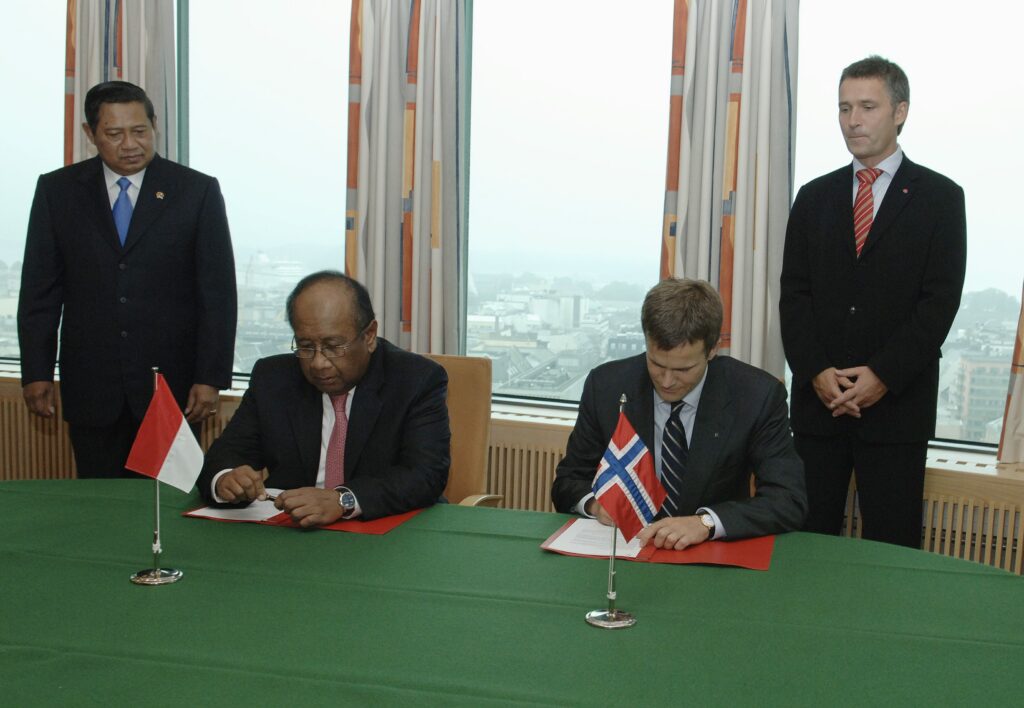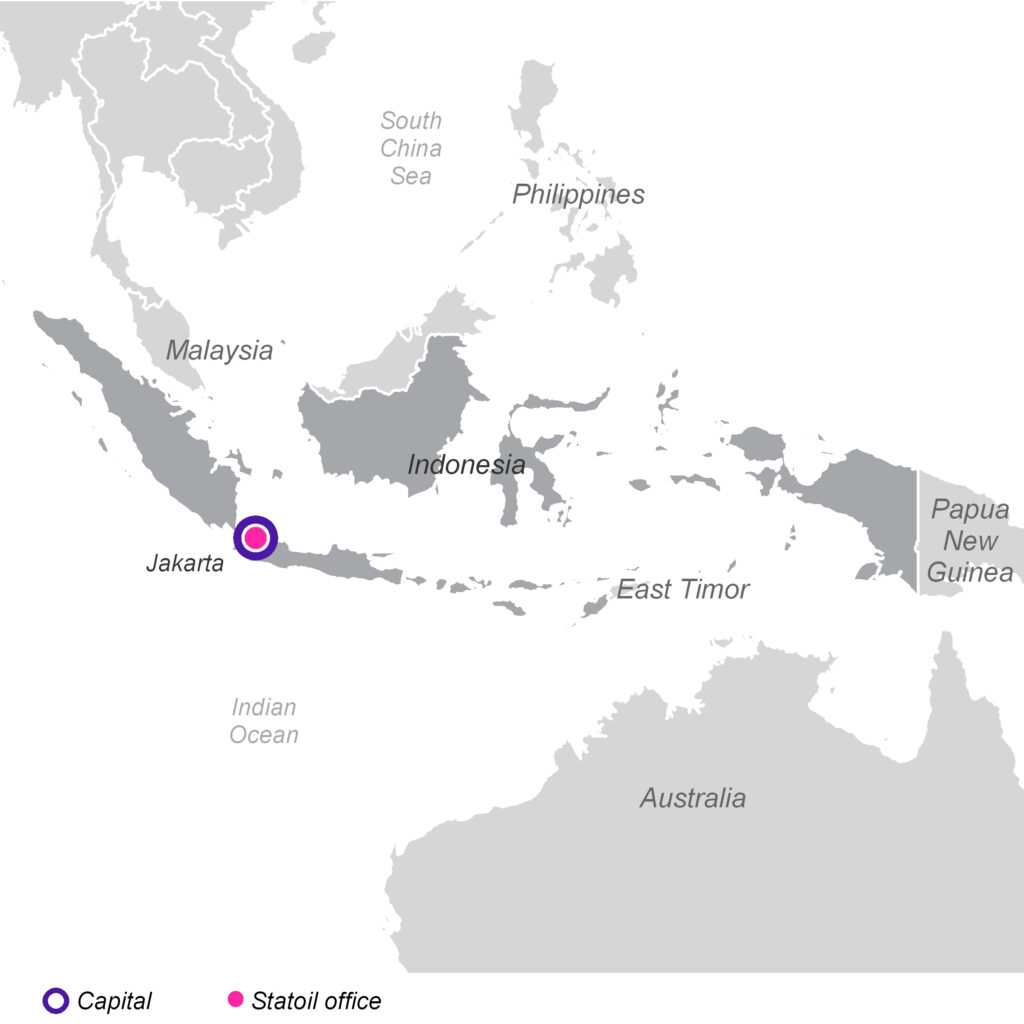Unplumbed depths in Indonesia

The Indonesian waters where Statoil was treasure-hunting might be unexplored, but oil production on land was nothing new in this island nation. On the contrary, its petroleum history extended back to the 1890s when the country was a Dutch colony.[REMOVE]Fotnote: https://snl.no/%C3%98konomi_og_n%C3%A6ringsliv_i_Indonesia. accessed 5 November 2021. The biggest onshore fields are in Sumatra and Kalimantan, with some smaller deposits in Java, the Moluccas and Papua. But Indonesia was not self-sufficient in oil.
In 2009, the country’s daily output averaged 2.2 million barrels of oil and gas, mostly the latter. About 70 per cent was used domestically. During the 2000s, Asia was the world’s fastest growing energy market – with China as the largest consumer. The Indonesian economy was also expanding strongly, with a big and growing demand for energy in the world’s fourth most populous country after China, India and the USA.[REMOVE]Fotnote: Indonesia’s population was estimated at 276 million in 2021. http://population.city/indonesia/.
Statoil makes its entry
The deepwater areas off Indonesia’s islands were opened for oil exploration in 2006, and Statoil expressed its interest. It wanted to benefit from the expertise and experience gained in exploring for oil in deep water off Norway and elsewhere.
Statoil secured its first exploration acreage off Indonesia in January 2007, obtaining 40 per cent of the Kuma licence in the Makassar Strait with Indonesian state oil company Pertamina and with ConocoPhillips as operator.[REMOVE]Fotnote: Annual report, 2006, Statoil. The company also acquired the operatorship of the Karama licence in the neighbouring block under a production sharing contract (PSC).

Collaborating with state oil companies in other countries was a well-established strategy for Statoil, which it had followed in other Asian countries such as Vietnam and Thailand. When partnering Pertamina in drilling, this included a transfer of expertise to the Indonesian company. That was precisely how Statoil in its time had learnt from Mobil and other international oil companies.
The collaboration bore fruit, in that Statoil acquired a 40 per cent interest in a PSC for the northern Makassar Strait and corresponding holdings in two PSCs for West Papua IV and Halmahera-Kofiau on the Indonesian continental shelf.[REMOVE]Fotnote: Press release from Statoil, 24 May 2011, “Statoil increases its presence in Indonesia”. Water depths varied between 1 000 and 2 000 metres.[REMOVE]Fotnote: http://www.energyboardroom.com/oilandgasdirectory/statoil-indonesia/.

Exploration drilling began in 2012. Statoil’s office in the capital, Jakarta, then had about 45 staff along with another four seconded to Pertamina. The exploration strategy involved mapping various areas with as much three-dimensional seismic surveying as possible before moving to further investigations.
Crises for oil and exploration
An oil price slump from 2014 prompted Statoil to reduce exploration drilling outside Norway in 2016. Such activities were concentrated internationally on growth opportunities in areas where the company was already established with discoveries and fields on stream, like Canada, Brazil and the UK. But frontier areas such as Indonesia and Suriname also remained on the list. Statoil planned to complete 12-14 exploration wells outside Norway in 2017.[REMOVE]Fotnote: Annual report, 2016, Statoil.
Activity in Indonesia was run down gradually thereafter. The separate companies responsible for exploration in a single licence were reduced from nine to four by 2019. Staffing fell to 18 people in 2018,[REMOVE]Fotnote: Annual report, 2018, Equinor. just five the following year,[REMOVE]Fotnote: Annual report, 2019, Equinor. and only one in 2020.[REMOVE]Fotnote: Annual report, 2020, Equinor.
The treasure hunt launched by the company had failed to yield the hoped-for rewards. A lot of money was spent on exploring for oil and gas. Two discoveries were made, but they were modest.
Statoil/Equinor’s involvement and investment in Indonesia were also controversial because of the government’s many breaches of human rights. In 2021, it had little activity in the country.
arrow_backOff Canada’s east coastSnøhvit – the “invisible” gas fieldarrow_forward